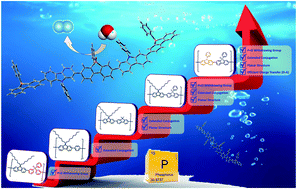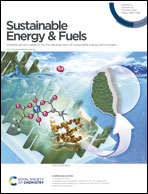Design and synthesis of phenylphosphine oxide-based polymer photocatalysts for highly efficient visible-light-driven hydrogen evolution†
Abstract
We have designed and synthesized a series of conjugated polymers with fluorene or carbazole and phenylphosphine oxide derivatives as polymer photocatalysts for visible-light-driven hydrogen evolution. The optimized polymer photocatalyst PCzBPO provided an excellent hydrogen evolution rate (HER) over two-orders of magnitude greater than its counterparts under otherwise identical conditions due to their unique combined effects of the introduced strong electron-withdrawing group, planar structure, extended conjugation length, and efficient charge transfer between donor/acceptor. Moreover, the PCzBPO exhibited an excellent HER with a record high apparent quantum yields (AQYs) of 14.92 ± 0.10% at 420 nm and 14.88 ± 0.08% at 460 nm with the residual palladium content and the absence of Pt cocatalysts. We believe that this systematic study on phenylphosphine oxide-containing polymers as ideal polymer photocatalysts could inspire further optimization and greater molecular design strategies in the development of high-performance photocatalysts to give a high impact in this field.



 Please wait while we load your content...
Please wait while we load your content...